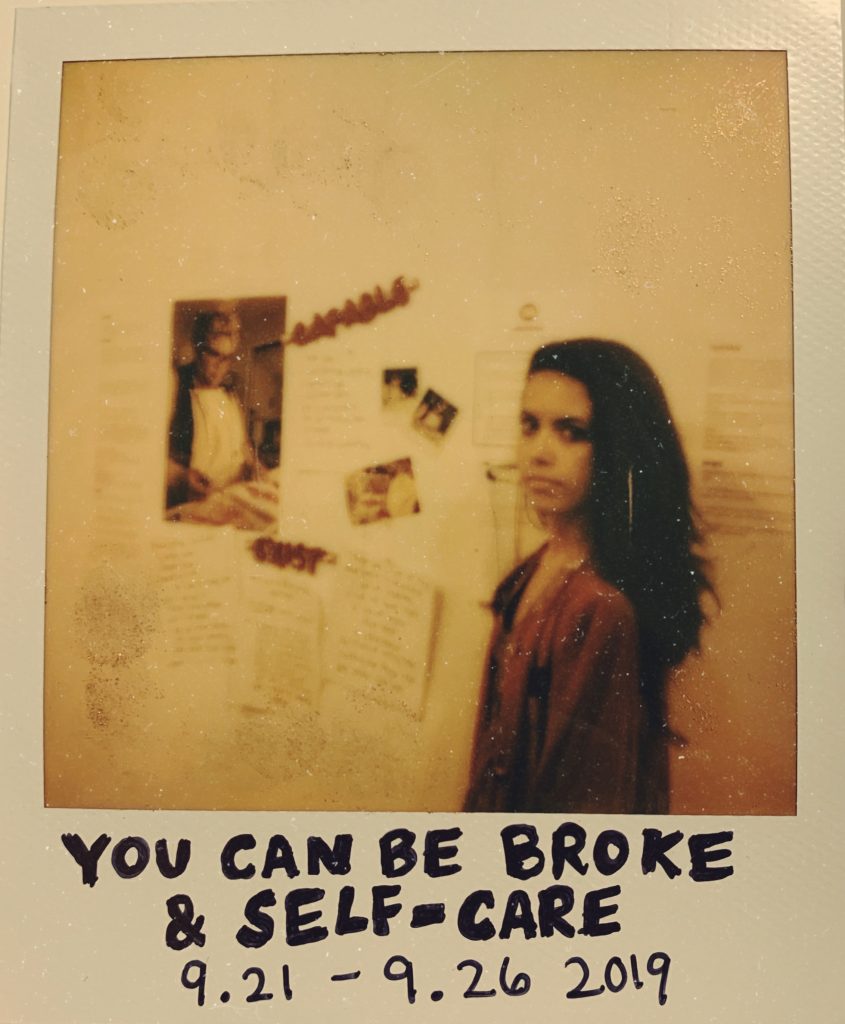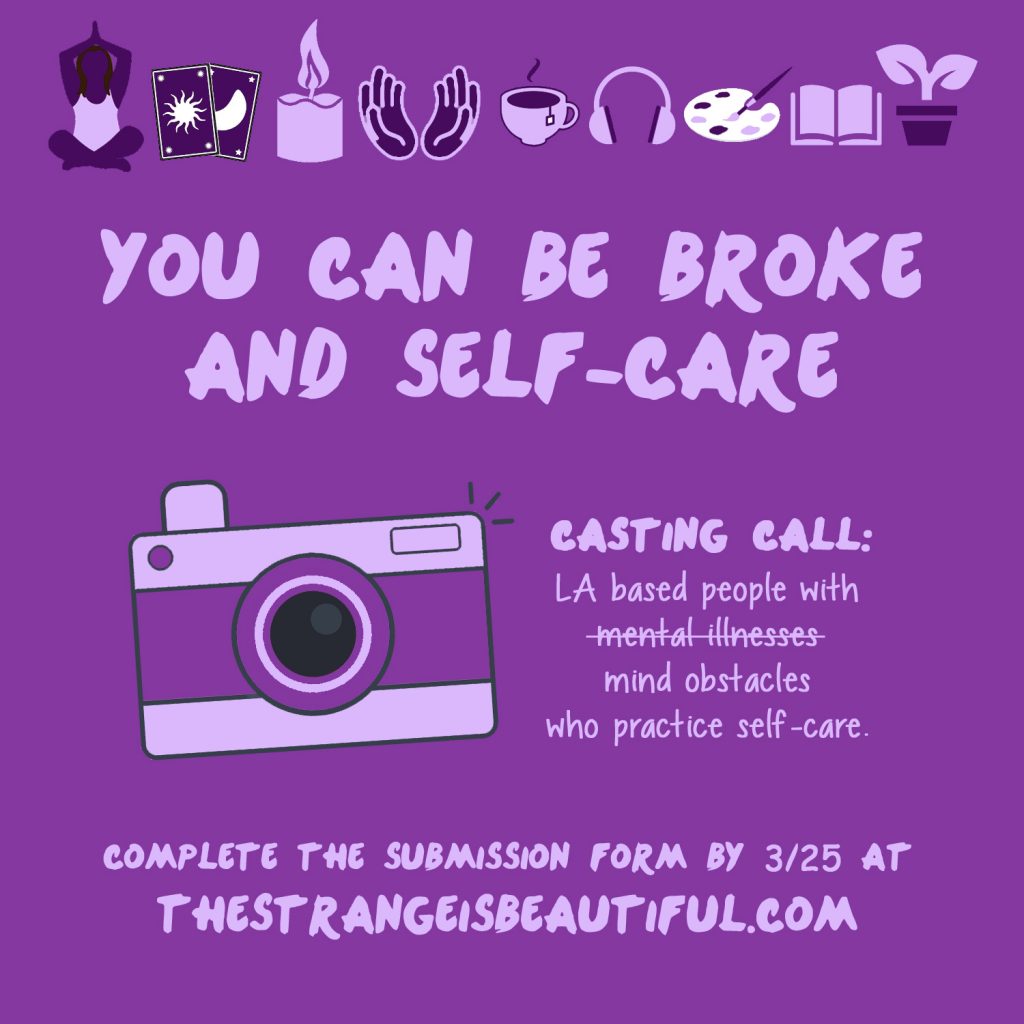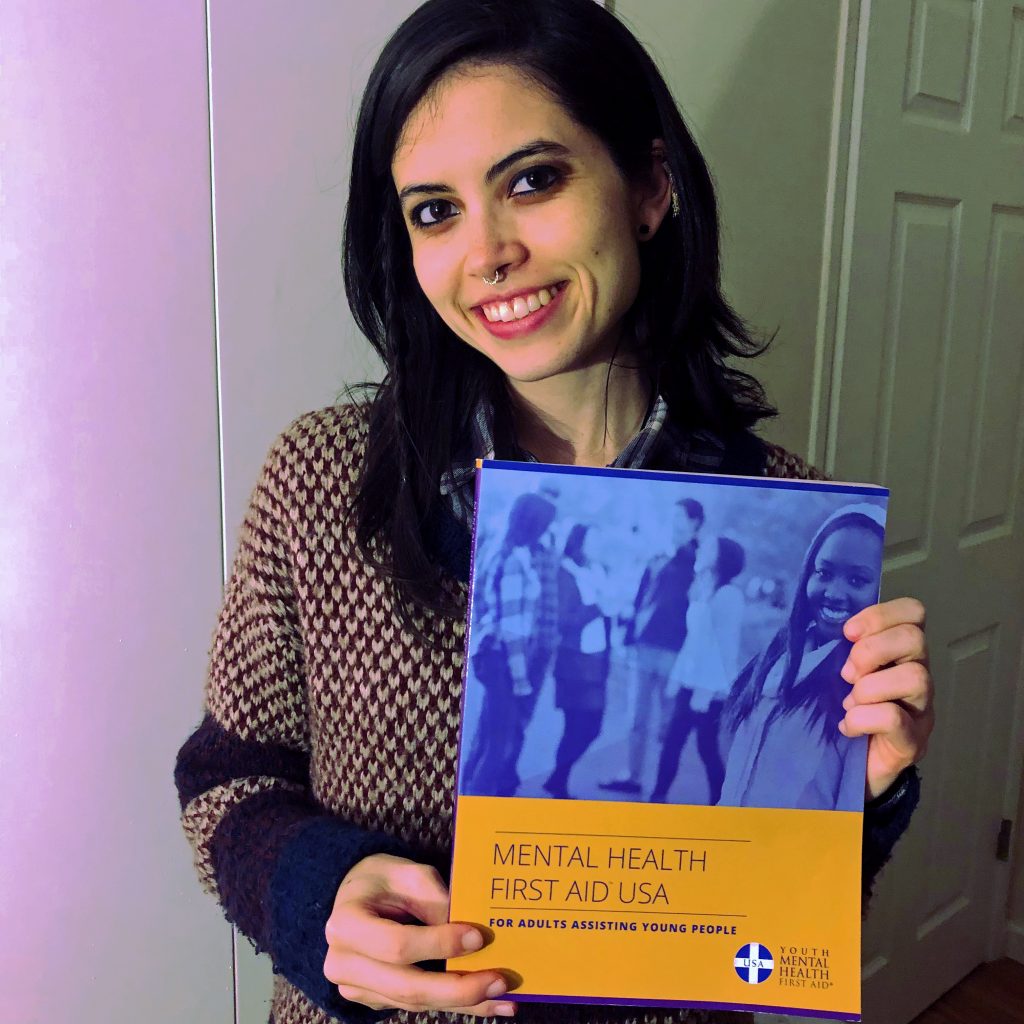What if people actually knew what to say and do to help you through your depression spiral, panic attack, or other mental health crisis? Do you have mind obstacles and yet feel conflicted as to what to do for someone else struggling?
People who needed this training throughout my life (rlly badly tbh).
Back in 2010 when I was a teenager, majority of my friends had serious mind obstacles, including my own, and know one knew what to do to support us.
Recently, in 2019, I was subbing at a high school, and a student who is in the fire fighting program asked me about The Strange is Beautiful blog. I replied with a question, do fire fighters get trained in mental health? He said no, and that he feels like many of them avoid handling those situations as much as possible because they never know what to do. It reminded me of when I was in college and had a panic attack, and a cop showed up to “help,” and ended up telling everyone to step away from me because I might be a dangerous criminal.
A few months ago, in 2018, I reported to human resources multiple panic attack incidents I had while working at YogaWorks in 2012 that were handled inappropriately by my boss at the time and by a yoga instructor. I had asked the human resources woman if the YogaWorks staff are trained in mental health, and she said they’re trained in CPR and First Aid, so they don’t need that. CPR and First Aid training teaches you about cardiac arrest and physical injuries. It is NOT mental health training. I can’t believe in 2019, that this is still not a universally understood concept.
In so many circumstances, whether it’s fire fighters or police officers being called to handle a mental health crisis, a teacher helping a student through a panic attack, or just someone calming a suicidal friend, there’s always fear and uncertainty as to how to assist someone with mind obstacles. Just as CPR and First Aid is crucial life saving knowledge, Mental Health First Aid Training is too.
I LOVED the youth Mental Health First Aid Training, and if you are someone who wishes your loved ones, teachers, or bosses knew how to aid you, or you would like to better your communication skills with fellow friends with mind obstacles, I recommend that you ask them to take it, and that you take it too.
I heard about it four years ago when I first founded The Strange is Beautiful, but never took it until now. Back in 2010, when my friends and I, who were all struggling with mind obstacles, expressed equal concern for our lack of trust in big mental health organizations because we believed them to be….well…for lack of better words, lame. Most were white-washed and offered the same two solutions – therapy or medication – and implemented the cliche campaign involving someone holding up a sign (you know what I’m talking about haha). They were definitely not for alternative teens and young adults – the punks, the grunge scene, or artsy kids. Because so many people I knew did not feel comfortable with those options, I decided to NOT try the Mental Health First Aid Training at that time, even though it sounded like such an incredible solution to my frustration in having to explain over and over again to people how to help me. Years later, after stepping out of my comfort zone and reviewing therapy directories – because of their POC and queer focus – my curiosity felt it was time to see what this training is like too.
And let me tell you, I am SO glad I tried it!
!!!
What happens in the training? Let’s break it down.
The Mental Health First Aid Training was an 8-hour free course (yes, I said FREE !!!!) and was super informative, clear and easy to apply to real-life situations. My favorite part of the training was how many scenarios they provided to give steps to address and assist those struggling with their mental health. There’s an option to take the adult or youth specific training, and since the youth one was taking place first, I took that one (there’s also a workplace one!).

From 9 a.m. to about noon, the training consisted of an initial introduction to different types of mind obstacles – their risk factors, signs, symptoms, and statistics. For the remaining five hours, they drilled us on how to use their mental health first aid action plan known as the acronym “ALGEE.” Our instructors, Jennifer and Kameelah, were AMAZING and spoke in straightforward and engaging voices. We did a lot of group work and interactive activities, including an “empathy” building exercise to understand what it might feel like to have schizophrenia. On top of the free training, they also give you a free 213 page manual, the same size of regular printer paper, with most of the information they cover in the training, organized in a slightly different fashion. To close, we took a group quiz, and later they emailed all participants an official mental health first aider certificate.

For me personally, since I’ve been around people with mind obstacles all my life, plus my own mind obstacles, and have studied mental health for years, most of the information was a review. However, it was presented in a new way that consolidated much of what I know and feel, and organized and simplified it. It gave me confident and concise wording to use to help others in crisis, helped me see where I can improve when speaking to someone else with mind obstacles, and validated why I have been frustrated in the past with specific reactions people have had to my depression or panic attacks. While this training is fantastic for someone who has no experience with mind obstacles (though might be a lot of information to take in within 8 hours), I believe that even people with tons of mental health knowledge can gain a powerful toolbox of clear steps and language to help those struggling, and to teach others to do the same.
Below are two main takeaways from the training, my 10 favorite examples they provided for the “L” and “G” in their acronym ALGEE, and what I feel is missing from it.
The Two Main Takeaways:
1. Their acronym ALGEE that EVERYONE should use! ???

If you’re worried about a loved one’s mental health or have noticed concerning behaviors that have changed in them, the Mental Health First Aid Training suggests these steps:
=&0=&This means to notice the degree of severity of the person’s mental health, and whether it is a crisis or not. Crises can include if the person is harming themselves, having a panic attack, is aggressive, or has lost touch with reality. I admired that they emphasized self-harm does NOT mean the person is suicidal – sometimes it is a coping mechanism.
=&1=&=&2=&This one isn’t in the manual, but they added it in the training on the spot.
=&3=&=&2=&LOVEEEE that they provided many examples of how to do this! The term “nonjudgmentally” is often thrown around, and I feel many people don’t fully understand what that actually entails. I’ll list my favorite examples later in this article.
=&2=&=&6=&=&2=&Loads of examples for this one! I list my favorites about this and the “L” in ALGEE later.=&2=&=&2=&=&10=& (doctors, nurses, therapists, school counselors, psychiatrists).
Only doctors and psychiatrists can diagnose someone with a mind obstacle, so it’s important to encourage they see professional help instead of diagnosing them yourself incorrectly, or them self-diagnosing and self-prescribing incorrectly. The dangers of a misdiagnosis in relation to medication can be very serious, for example, if someone believes they have depression and takes antidepressants, they might become dangerously worse if they are actually bipolar. Bipolar and depression symptoms can often be mistaken for each other, and yet the medicine for both are sometimes complete opposites. According to the training, other people that can be helpful are nutrition experts, certified peer specialists, social workers, and drug and alcohol specialists.

The Strange is Beautiful adds on to this list trauma-informed yoga instructors, energy healers, and other healers.
=&11=& aka what The Strange is Beautiful blogs about such as yoga, meditation, art, music, dance, journaling, =&12=&=&2=&The fact that they include this in their foundational acronym is HUGELY important and often not emphasized enough in many other mental health organizations I have seen. Even with therapy and medicine, self-help, or seemingly more popular phrase, “self-care,” is crucial for a person to practice to learn positive coping mechanisms. Also, self-help is sometimes the person’s only choice if they do not have access to healthcare or can not afford it. It can include the use of alternative healers such as trauma-informed yoga instructors, tarot readers, energy healers and other healers who they feel more of a trusting connection to than Western medicine options, or can simply afford them or have access to over Western medicine. Often they provide their clients with take-home tools for their own self-help or self-care home-practice.
2. Their advice and scripts on how to talk to someone with suicidal thoughts or contemplations are extremely useful!

According to the Mental Health First Aid Training, it is important that if you believe someone is suicidal to ask them directly:
“Are you having thoughts of suicide / are you thinking of killing yourself?”
If yes, the training teaches you to ask the following questions:
“1. Have you decided how you would kill yourself?
2. Have you decided when you would do it?
3. Have you taken any steps to secure the things you would need to carry out your plan?”
The reason they ask about a plan is because those who have a plan are usually seen as having a higher risk of actually committing suicide.
In response to the person’s answers to those questions, they say to follow these guidelines:
“– Appear confident, as this can be reassuring
– Tell them thoughts of suicide are common, and help is available for them.
– Let them know thoughts of suicide do not have to be acted on.”
 One that is not included in the manual but that they talked about in the training is try to involve the person in the plan to take care of them, meaning, talk to them about professional help they already seek, coping mechanisms or self-help that assists them, and who their emergency contact or support system is.
One that is not included in the manual but that they talked about in the training is try to involve the person in the plan to take care of them, meaning, talk to them about professional help they already seek, coping mechanisms or self-help that assists them, and who their emergency contact or support system is.
=&14=&, they recommended to call 911 and ask for their “Mobile Crisis Team” or other mental health trained team. Sometimes they are available, and sometimes they aren’t.
 Though not included in the manual, I did bring up the safety concern of people of color and undocumented people when police are involved, so we talked about asking the person if they are comfortable with police and hospital involvement. Regardless of what they say, if they pose a threat to you – if they hold a weapon or are violent – 911 should be called.
Though not included in the manual, I did bring up the safety concern of people of color and undocumented people when police are involved, so we talked about asking the person if they are comfortable with police and hospital involvement. Regardless of what they say, if they pose a threat to you – if they hold a weapon or are violent – 911 should be called.
10 Favorite Examples of “L” and “G” from ALGEE
The training was FULL of specific examples of how to implement ALGEE, and things to avoid doing. In my experience, the most difficult for people to grasp are the “L,” listen non-judgmentally, and the “G,” give reassurance and information, since they both require patience to not react, and changing a person’s thinking process. Below are 10 of my favorites on how to listen non-judgmentally (“L”) and how to give reassurance and information (“G”).

1. State the behavior change.

An example they provided on how to listen non-judgmentally was to state the behavior change you’ve noticed in the person you are concerned about such as “I’ve noticed you’ve been sleeping a lot more, and haven’t wanted to take part in activities you like such as music, is everything okay?” Many parents, other adult figures, and people in general might immediately assume the change in behavior is simply laziness, and demand they change it or else receive a certain punishing consequence, which is not beneficial and could be very detrimental to someone struggling. Speaking of demands…













